25. Jan 2022 - DOI 10.25626/0135
Jiří Smlsal is a PhD student at the Institute of Economic and Social History, Charles University in Prague. His research interests include the history of the genocide of Czech Roma and forced labour camps.He also works as a curator at the Department of Ethnology of the National Museum in Prague.
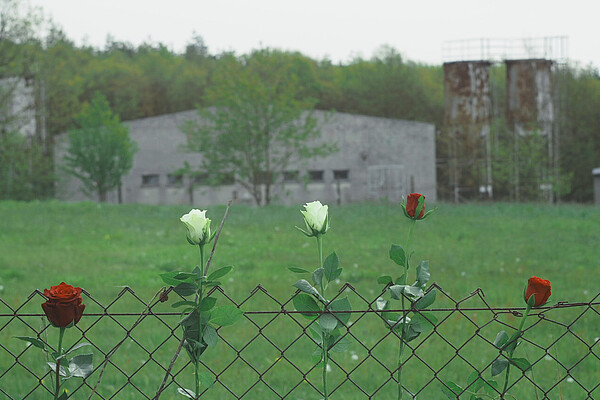
The pig farm that was built between 1972 and 1974 in Lety, near the city of Písek, on the site of a former concentration camp for Czech Roma will soon be demolished. In its place, the Museum of Romani Culture in Brno will open a new museum and memorial. This will mark the end of a nearly 30-year-long effort to create a worthy place of remembrance. Lety is the most prominent site of memory relating to Czech Romani history, which is why the pig farm that was built on this public space has become a symbol for mislead memory politics and anti-Romani sentiments in Czech society. Since the public debate about the history of Lety exploded in the early 1990s, the history of the Lety camp, in which an estimated 1300 members of the Czech Roma community were imprisoned between 1942 and 1943, has been the subject of much controversy. This controversy has been marked by opposing views between memory activists and professional historians, between memories of survivors and contemporary witnesses on the one hand and ‘objective’ historical sources on the other. In the following, I will reconstruct how Lety became a site of memory that is both an irritation and a fascination to many contemporary Czechs. After a brief recounting of the history of the Romani Holocaust in the Protectorate of Bohemia and Moravia during the Second World War, the article’s main focus will be on the public debate regarding the establishment of a memorial and the demolition of the pig farm, a debate which was particularly heightened between 1994 and 1999. Though more than twenty years ago, the arguments and interpretive frames established during that debate continue to determine the shape of current public debates about this memorial site and, more broadly, about the Romani minority in Czech collective memory and recent history.
‘Gypsy Camp I’, the official name for the camp in Lety, was established in 1942 by the occupation authorities as part of the ongoing Nazi genocide of the Roma. From August 1942 to May 1943, the camp became a place of suffering for entire Roma families, including the elderly and the smallest children. Of the approximately 1300 persons officially categorized as “Gypsies” that were imprisoned there, more than half were eventually transported to Auschwitz-Birkenau. About one quarter of them managed to escape (which, however, did not save them from further persecution) and the remaining were eventually released as “non-Gypsies.” At least 329 people, mostly small children, died in the camp – mainly due to typhus which broke out as a result of malnutrition and disastrous sanitary conditions in the overcrowded camp. The prisoners not only faced hard labour, but they also endured violence at the hands of the prison guards.
After the end of the war, no one was held responsible for the management of the camp: the former camp commander, Josef Janovský, who was a Czechoslovak police commander before the war, was acquitted in a retributive trial in 1948. As with other formerly Nazi occupied countries, the narrative of heroic national resistance to Nazism soon dominated post-war Czechoslovakia. There was no room for commemorating the victims of racial persecution in this narrative, let alone for reflecting on the participation of locals in its implementation. In Lety, only a simple wooden cross, erected by survivors, stood as a reminder of what had happened there. The cross is depicted in a short documentary film, Don't Forget This Little Girl, made in 1959 by the husband of one of the survivors. The documentary draws a (rather inaccurate) parallel with the story of the Lidice children, a canonical narrative of the persecution of the ethnic-Czech population. The camp commander is characteristically depicted as German,[1] The documentary, therefore, places the story of Lety victims into the dominant narrative of Nazi occupation. During state socialism, the Romani Holocaust did not become part of Czech memory culture. Not only was there no memorial erected on the site of the concentration camp itself, but the local authorities even decided to build a pig farm directly on it in 1972, which at the time, only a few individuals protested.[2]
Due to this lack of historical awareness, the public discussion about the Lety camp during the 1990s seemed to come out of the blue. Concerned journalists, civil rights activists and even some politicians referred to the genocide of Czech Roma as the ‘forgotten’ or ‘unknown’ Holocaust.[3] They identified the lack of available information as the main problem and urged the new democratic regime to address it. Within this framework, some actors (e.g. Paul Polansky and Václav Havel) judged the previous ignorance and disinterest in Romani history as the deliberate concealment and rewriting of history by the communist regime. However, even though the Romani Holocaust had certainly been absent from the public sphere under socialism, such a critique ignored that information on the subject had nevertheless been available and that some research had already been done.
In the 1970s and 1980s, historian Ctibor Nečas published ground-breaking research on the Romani Holocaust in the Protectorate of Bohemia and Moravia and the Slovak Republic. Nečas later became a major player in the 1990s debate about the Lety camp. His interest in Romani history was initially sparked by his contact with Romani intellectuals associated with the Brno-based Union of Gypsies–Roma (Svaz Cikánů-Romů), the first – however short-lived – Romani organization in Czechoslovakia, founded in August 1969. An important part of their activity was to commemorate the Holocaust, and many survivors and survivors’ relatives were active in this organization.[4] One of Nečas’s important collaborators personally experienced Nazi persecution: Vlasta Kladivová, historian and former communist resistance-fighter who researched the ‘Gypsy family camp’ at Auschwitz-Birkenau, was one of the first to document the Nazi persecution of the Roma. She recorded the names of Romani women on a list of Czechoslovak female prisoners that she secretly compiled during her own imprisonment in the concentration camp.
Nečas was a prolific researcher who devoted himself to extensive archival research. His work still represents the foundation of what we know about the Romani Holocaust in Nazi- occupied Czechoslovakia today. However, much of his work suffers from repetitiveness and the constant recycling of the same information. With a bit of exaggeration, it could be said that Czech historiography of the Romani Holocaust has not fundamentally advanced since Nečas’ 1981 work, On the Fate of the Czechoslovak Gypsies.[5] Any historian who wants to address this topic must necessarily rely on Nečas’ publications. This also means that aspiring students of the Romani genocide must come to terms with the limits of his approach. Nečas was mainly a material historian who, like many historians of his generation, did not reflect his own research methods and did not engage in conceptualization. Instead, he relied on the assumption that there was autonomous testimonial value in the (written) sources. He primarily worked with sources of an official nature, i.e. documents that facilitated the persecution of the Romani and were produced by the perpetrators. Unfortunately, some of the terms used in these documents, such as the term “asocial”, also appeared in Nečas’ texts, and with them, in some cases, the adoption of the Protectorate security authorities’ point of view. He also structured his work on the‘Gypsy camps’[6] along the individual articles of the camp regulations and traced the legal basis of the persecution and the development of the institutions that implemented it. In doing so, he assumed the automatic acceptance and implementation of Nazi regulations by the Protectorate’s institutions and largely ignored the agency and complicity of the local actors.
However, despite his strong reliance on official documents, Nečas also significantly recorded the testimonies of Romani survivors.[7] These focused mainly on the imprisonment of Czech Roma in Auschwitz-Birkenau. Although he did a few interviews with Lety survivors, the camp itself was barely mentioned. Moreover, he hardly ever linked the survivors’ memories with the archival documents, using the testimonies mostly to illustrate his interpretations. The apparent opposition between ‘reliable’ official documents and ‘unreliable’ oral accounts in Necas’ work also resonated in the public debates that occurred in the mid-1990s over the demolition of the pig farm in Lety.
The main reason that Lety was omitted can be derived from Nečas’ regional focus on Moravia. For the Moravian Roma, there was another, much more important site of memory: Hodonín u Kunštátu. In 1942/43 an estimated 1400 Moravian Roma were concentrated in ‘Gypsy Camp II’ awaiting deportation to Auschwitz-Birkenau. At least 207 prisoners suffered unbearable living conditions in the camp: epidemics, starvation, forced labour and both physical and psychological abuse. It was at this former camp site that the Union of Gypsies-Roma held their first commemorative meeting in 1973. Moravian Romani intellectuals previously linked to the organization founded the Museum of Romani Culture in Brno in 1991. Thus, the museum’s commemorative activities focused primarily on Hodonín u Kunštátu and Nečas collaborated with the museum. Since the 1990s, the museum has become a centre for research and commemoration of the Romani Holocaust and is now headed by Nečas’ former student, Jana Horváthová. However, the Museum of Romani Culture did not play a major role in the controversy over Lety. Although the museum put much effort into building the memorial in Hodonín u Kunštátu, Lety remained almost completely out of their focus. The camp in ‘Hodonínek’, as it is often referred to, never became a topic of public discussion, even though its history is analogous to that of Lety. It was someone who had been entirely external to the debates up to that point, who eventually brought the Lety camp to the centre of public consciousness and debate.
The American writer, traveller and human rights activist Paul Polansky learned of the existence of the former “gypsy camp” in Lety in 1994 during his genealogical research in the Třeboň archives. Polansky was shocked to discover that a pig farm stood on the site of the former concentration camp, a fact that apparently no one seemed to care about,[8] He concluded that the Czech government was deliberately concealing the “truth about Lety”[9] and decided to break the silence. Together with his collaborators Lubomír Zubák, who died in 2015, and Markus Pape, a German journalist living in the Czech Republic, he conducted archival research, recorded survivor testimonies, searched for former guards and skilfully publicized all of it. Polansky’s work has resulted in a number of publications: an edition of memoirs titled Black Silence, a collection of poems titled Living through it twice: poems of the Romany Holocaust, a novel titled The Storm, and an edition of his diary entries titled Death Camp Lety: The Investigation Begins (1992–1995).[10] The various genres and forms chosen for publishing his research findings suggest that the author did not differentiate much between verified information and his own assumptions. Polansky was convinced that thousands of Roma were murdered at Lety and he emphasized the cruelty of the Czech guards and the moral responsibility of the Czech nation. He referred to Lety as a “death camp” in which prisoners were targeted for extermination. It was this fact, he claimed, that the Czech government tried to conceal. Polansky soon became persona non grata in the Czech Republic.[11] Unfortunately, the edition of witness memoirs, Black Silence, loses credibility due to its unprofessional processing. For example, the book contains completely misleading comparative claims that Lety was worse than Auschwitz, which the author makes without further comment. Instead, he claims that he came across the remains of gas chambers on the Lety camp site.[12] At the same time, some of those whose memories are published in the book later claimed that Polansky had misrepresented them.[13] However, the exaggeration of some of the accounts may not be the result of deliberate manipulation but could be attributed to his amateurish approach (Polansky himself did not speak Czech).
The social context at the time of the interviews must be considered as well. Polansky interviewed Romani survivors during the post-socialist transition when open racism filled the public sphere. While Polansky was calling for the demolition of the pig farm at the former camp’s site, Czech Roma were facing a wave of racially charged violence at the hands of ‘skinheads’. Hundreds of racially motivated assaults, including murders, were committed in the 1990s, and a large number of the perpetrators were punished only slightly, or not at all. In this light, Polansky’s scandalizing narrative and his updating of history is more understandable.
Despite all the reservations about his methods and style, it is undeniable that Polansky was instrumental in opening up the public debate about Lety. However, as Ondřej Slačálek has pointed out, Polansky’s compelling voice, his rousing moral appeal, but also his tendency towards conspiracy theories and his somewhat loose approach towards sources, all contributed to the termination of any discussion about the facts.[14] This discussion literally drowned in the numerous assumptions, inaccuracies and exaggerated value judgments which provided an easy ammunition for nationalist and anti-liberal circles. Historian Tomáš Sniegoň calls Polansky a representative of the “Americanization of the Holocaust”.[15] Polansky not only built on the narrative of the Holocaust, as was canonized by American popular culture in the 1990s (in his novel The Storm, for example, he makes numerous references to Schindler’s List), but also brought American institutions into play. For example, he presented his findings to the US Congressional Commission on Security and Cooperation in Europe.
Under pressure from foreign institutions and in view of foreign public opinion in the context of EU accession negotiations, the Czech government finally erected a monument in Lety in 1995. At the unveiling of the memorial, which is a sculptural work in the form of a shattered sphere and which Romani survivors pejoratively refer to as a “rock,” President Václav Havel spoke of redressing the injustice caused by the communist concealment of history.[16] The memorial stood in close proximity to the pig farm that had been privatized the previous year, and the memorial was greatly spoiled by the pervasive stench. Unlike the Czech political elite, the representatives of the surviving Romani community did not consider the injustice to have been atoned for, nor should the topic be closed. With the help of Polansky’s collaborators Markus Pape and Čeněk Růžička, the latter having learned through their research that his mother had been imprisoned at Lety, the Committee for the Compensation of Romani Holocaust Victims (Výbor pro odškodnění romského holocaustu) was formed in 1998. Their demand for the demolition of the pig farm initiated the next phase of the discussions about Lety and also a special ministerial commission. Even though the conclusions of this commission recommended the purchase and demolition of the pig farm, the government rejected the proposal due to the costs involved. The deliberate disregard for history and the arguments based on economic costs and the inviolability of private property have become typical from the Czech political elite in relation to Lety.
Professional historians reacted to Polansky’s research and appeals with extreme dismissiveness. Paradoxically, Ctibor Nečas, who himself tried to push for the establishment of a memorial in Lety and criticized the operation of the pig farm, also opposed Polansky.[17]Nečas’ reaction was defensive, referring to Polansky’s research as a threat to the Czech state’s international reputation and as a threat to his position as a professional historian and his monopoly on the historical commentary. The entire dispute was framed as a struggle between ‘objective historians’ and ‘memory activists’. Nečas also took a very hard line against Polansky’s collaborator Markus Pape’s work which was based on solid sources.[18]
In 1999, at the height of foreign criticism of the Czech policy towards the Roma and during the negotiations pertaining to the pig farm buyout, the conservative nationalist historians Jaroslav Valenta and Oldřich Sládek held a conference in parliament in which they distributed their booklet Historians and the Lety Case, published by the Czech Academy of Sciences. The publication was intended to represent binding scientific opinion and to influence the government’s decision: it claimed to be “factual objective record, summarizing reliably verified historical facts” that should be used to “prevent important political decisions should they be made on the basis of journalistic and media information deformed by emotional interpretations.”[19] Nečas wrote an introductory study, more factual than evaluative, which served to legitimize Sládek’s and Valenta’s conclusions. Apart from the attacks on “amateur journalists”, it claimed that the camp area did not overlap with the pig farm area. This claim, however, has since been completely disproved by archaeological research conducted in 2016.[20] Central to their argument was their opposition to “national self-flagellation” and the rejection of any connection between the camp’s operation and Czech culpability, which would have undermined the dominant narrative of the Czechs as opponents and victims of Nazism. In this interpretation, the camp was solely the work of the Nazi occupiers, and the fact that the camp was guarded by (ethnically Czech) Protectorate gendarmes should not have been considered relevant. Arguments against the demolition of the pig farm and the erection of the memorial that were established in the 1990s were then repeated in the following decade: the claims of the “activists” were exaggerated and overstated; the demolition of the pig farm would constitute an interference with private property and would have unbearable economic costs; Lety may have been a Nazi crime, but it is not part of Czech history.
Behind such arguments lie an attempt to historiographically separate the terms ‘Protectorate and ‘Czech’. As a result, a relatively lenient assessment was made of the so-called ‘disciplinary labour camp’ for men from marginalized social classes, which preceded the construction of the ‘gypsy camps’ in Lety and Hodonín and was established by the Czech government before the occupation began. Only a minority of the prisoners of this forced-labour camp were ‘gypsies’, though the establishment of the camps contained strong racist impulses.[21] Most significantly though is that the Nazi-era concentration camps for the Roma were built on the same sites and employed the same guards. The attempt to juxtapose the legitimate ‘Czech’ labour camps with the Nazi concentration camps[22] established a dichotomy between ‘social’ and ‘racial’ persecution, but above all, led to further confusion in the public debate. Both phases of the Lety camp’s operation were often confused in the media. Valenta directly opposed the use of the term ‘concentration camp’ for Lety, as it evoked undesirable associations with Auschwitz and other extermination camps.[23] This line of argumentation is unfortunately still vivid in the present-day debate.
The question of the appropriate terminology for describing the Lety camp has been repeatedly raised. The term ‘concentration camp’ was replaced by such euphemisms as ‘assembly’ or ‘internment’ camp. The narrative that Lety was not a real concentration camp, but ‘only’ a forced-labour camp, corresponds with the persistent prejudice against the Roma. It implicitly evokes the impression that the victims were somewhat responsible for their own persecution. This narrative has been upheld to this day, not only by the relatively obscure nationalists, but also by top politicians. In 2005, the then president Václav Klaus was very much in agreement with communist MEP Miroslav Ransdorf when he claimed that Lety had not been a real concentration camp, but only a labour camp.[24] Similarly, in 2016, then Finance Minister Andrej Babiš said that it had not been a concentration camp: “whoever did not work, just get them in – and the person was there”. Tomio Okamura, the chairman of the openly racist right-wing party, used the publication Historians and the Case of Lety as a justification for his statement that the Lety camp was not a concentration camp and that the Romani victims cannot therefore be considered victims of the Holocaust.
Between 2013 and 2018, there were several instances when politicians combined cultural conservatism and somewhat covert racism with a declared concern for the lower social classes by using this narrative.[25] They questioned the historical fact of racial persecution all the while pointing to the excessive cost of a memorial. They also used the argumentative framework from the 1990s debate in a new way: rather than defending the authority of the historian and the international reputation of the state, they now aimed at activating contemporary anti-Romani resentments and at lashing out against ‘liberal’ political opponents. During the 1990s, political elites across the party spectrum downplayed the political significance of the historical argument during the pig farm buyout negotiations; today, the topic of the Lety camp and its memory is used as a political weapon in a ‘culture war.’ However, one positive effect of such polarization was that liberal politicians began supporting the buyout and demolition of the pig farm. In particular, Babiš’s 2016 remarks aroused such outrage, it became the main impulse for a new, and this time successful, negotiation for the buyout of the site which finally took place in 2017.
Still, the buyout would not have happened if it were not for the continuous activities on the part of civil society. The persistent stench that wafted from the pig farm, which no one who had ever visited the memorial could have forgotten, was an urgent reminder that the struggle for recognition of the victims’ suffering was not over. Every year, commemorative meetings were held at the site of the former camp, where Holocaust survivors and their families met with members of the government. They were organized by the Committee for the Compensation of Victims of the Romani Holocaust, and it was this organization that exerted sustained pressure on domestic politicians and international organizations. The European Parliament included a call on the Czech government to “remove the pig farm [...] and to create a suitable memorial“ in Lety in its 2005 ‘Resolution on the Situation of Roma in the European Union (P6_TA-PROV(2005)0151)‘. Likewise, in 2013, the United Nations Human Rights Committee called on the Czech Republic to demolish the pig farm in its annual report. However, negotiations with state organizations were not the activists’ only focus. The annual commemorations were used for demonstrations, and even for a three-day blockade around the pig farm in 2015. These events involved Czech and foreign anti-racism activists as well as Romani activists. The issue of the demolition of the pig farm has transcended the circles of the survivors and has been taken up by the descendants of Romani from Slovakia who came to the Czech Republic after the end of the Second World War and in whose social memory Lety played no role.
The pig farm in Lety has become a telling symbol of the Czech state’s dismissive attitude towards the Roma and the racism they continue to endure in Czech society. The updating of history, its mobilizing function and its constant relation to the present is typical of Lety as a site of memory. The powerful symbol of the pig farm has been used, for the better, to draw attention to the neglect and silencing of the Romani experience, and for the worse, to formulate a kind of perpetual “national guilt”.[26] Not only in the speeches of apologetic historians, but also in statements by anti-racism activists, the debate has often been led in nationalist terms. The primary focus has either been on preserving or questioning the dominant Czech-nationalist narrative. The commemoration of the victims, which was supposed to be the primary concern, has thus taken a back seat.
The architectural design of the museum and memorial being prepared by the Museum of Romani Culture in Lety envisages keeping part of ruined remains of the pig farm on site. It is clear that the story of the concentration camp at Lety can no longer be told without the story of the pig farm. The public debate in the 1990s and the current controversies show that writing the history of Lety will necessarily have a dialogical and polemical character that needs to be reflected upon. At the same time, it is necessary to historicize the ‘case of Lety’ itself and its social context. Perhaps, preserving the remains of the pig farm may be seen as reflecting the fear that a powerful and mobilizing symbol will suffer from this necessary historicization. Indeed, musealization may not only mean the symbolic rectification of the past and the establishment of a form of commemoration, but also its conclusion, the loss of its topicality and emotional urgency. With the smell of the pig farm fading away, Lety may lose its symbolic position in the public imagination. However, last year’s dispute over whether the names of Romani Holocaust victims should be read in public on Holocaust and Heroism Remembrance Day (Yom HaShoah) alongside the names of Jewish victims, and therefore whether it is correct to associate the murder of the Romani people as part of the Holocaust,[27] shows that the topic of the Roma’s wartime persecution still remains a sore spot in Czech society.
Jiří Smlsal: The Stench of Pigs and the Authority of Historians: Czech Debates About the Lety Concentration Camp. Cultures of History Forum (25.01.2022), DOI: 10.25626/0135.
Copyright (c) 2022 by Imre Kertész Kolleg, all rights reserved. This work may be copied and redistributed for non-commercial, educational purposes, if permission is granted by the copyright holders. For permission please contact the editor.

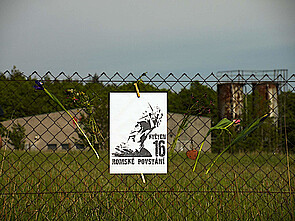
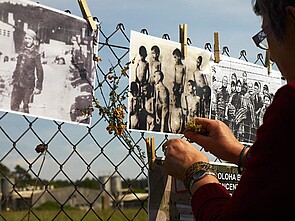

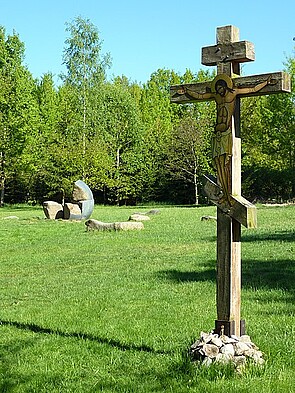
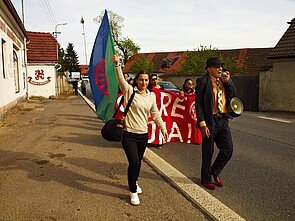

Patrick Metzler · 21.12.2022
Localizing “Our Germans”: The New Permanent Exhibition in Ústí nad Labem
Read more
Veronika Pehe · 11.05.2022
‘The Nineties’ on TV: Remembering the Transformation Era in Czech Popular Culture
Read more
Karolína Bukovská · 25.11.2021
(Re)construction of Czech History: The National Museum and its New Permanent Exhibition on the Twent...
Read more
Veronika Pehe · 21.07.2021
Czech Prime Minister Implicated as Communist Secret Police Agent – Yet Nobody Cares
Read more
Jakub Vrba · 18.12.2020
Monumental Conflict: Controversies Surrounding the Removal of the Marshal Konev Statue in Prague
Read more
Get this article as PDF download (including pictures).